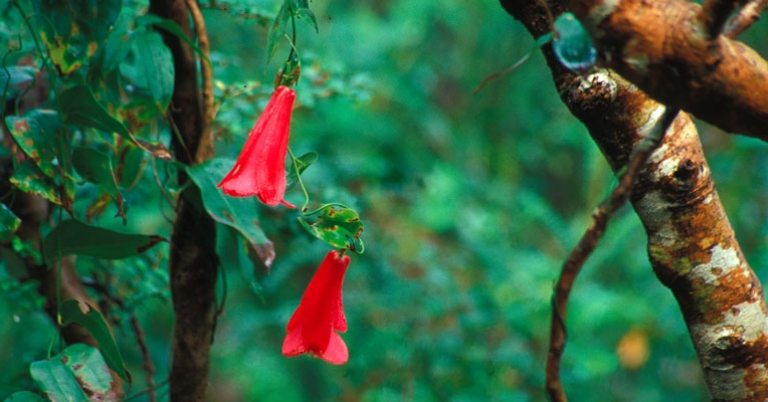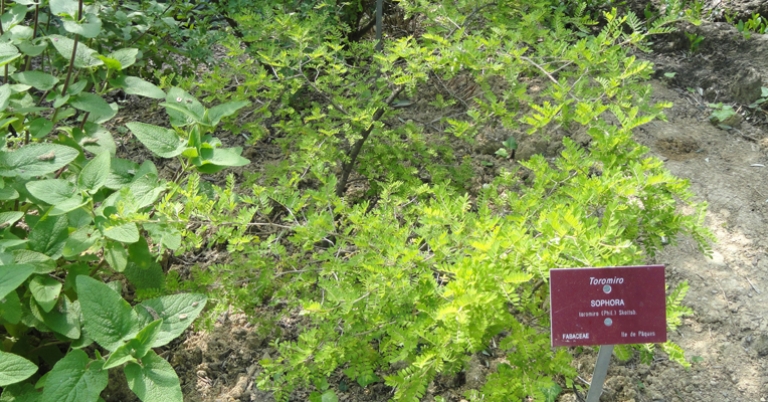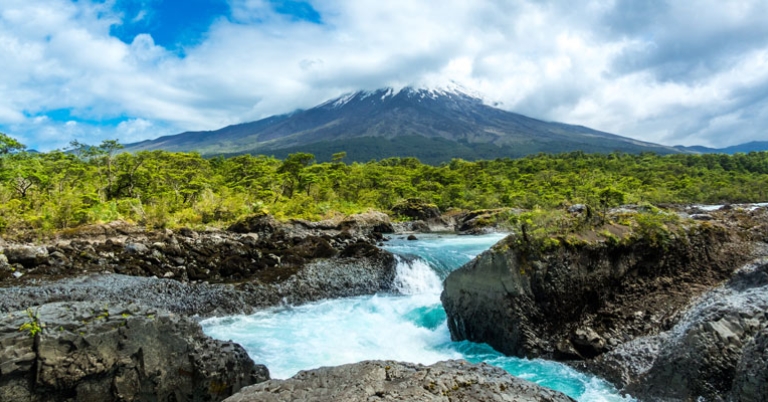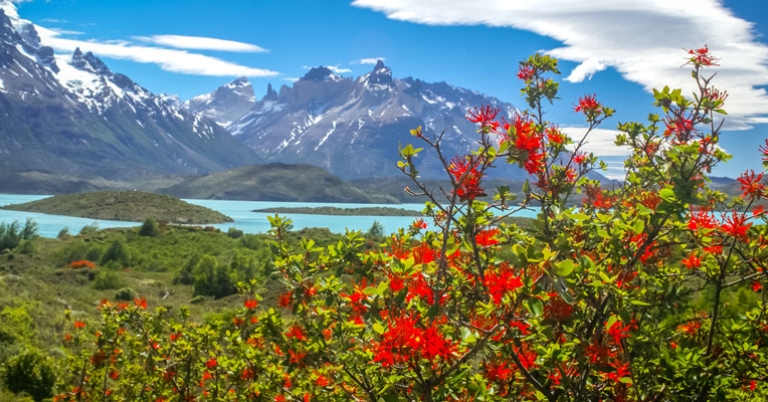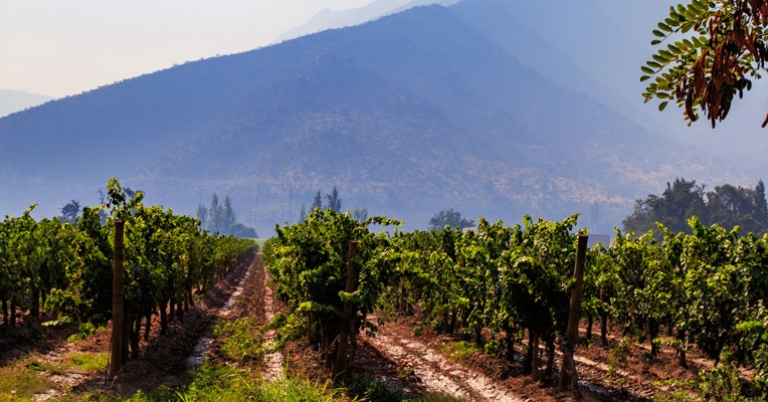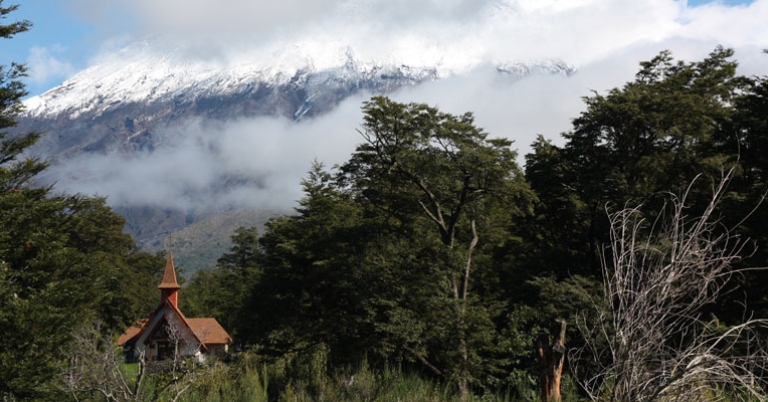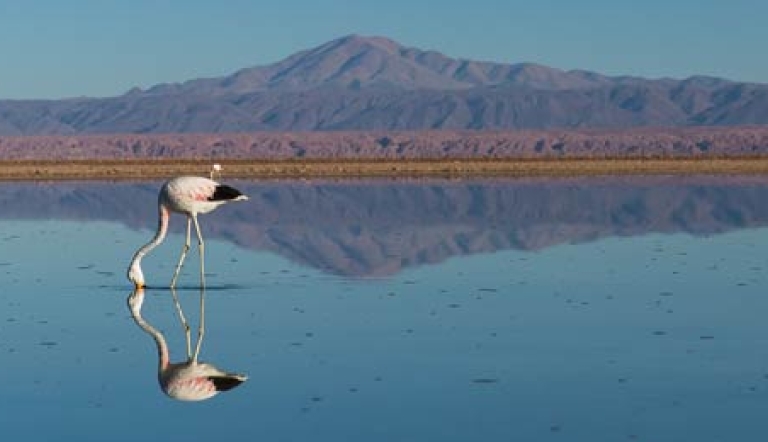Chile | Gardens, Parks, Glaciers, and the Sea with Pacific Horticulture
About this trip
 Discover beautiful Chile and its native and endemic flora as you visit botanical gardens, national parks, and private reserves during this 13-day garden tour with Dave Demers. Begin in seaside Viña del Mar, Chile's "Garden City," to explore the impressive collections of the National Botanical Garden. Continue south to Chile's central valley and stand among towering, ancient Alerce trees, endemic to this region. Then head to iconic Patagonia for views of verdant forests and colorful flora against windswept mountain scenery in one of the most beautiful places on earth. After rewarding days spent among glorious natural surroundings, enjoy delicious meals prepared with fresh ingredients, and cap your experience with an unforgettable stay in a comfortable, eco-friendly yurt.
Discover beautiful Chile and its native and endemic flora as you visit botanical gardens, national parks, and private reserves during this 13-day garden tour with Dave Demers. Begin in seaside Viña del Mar, Chile's "Garden City," to explore the impressive collections of the National Botanical Garden. Continue south to Chile's central valley and stand among towering, ancient Alerce trees, endemic to this region. Then head to iconic Patagonia for views of verdant forests and colorful flora against windswept mountain scenery in one of the most beautiful places on earth. After rewarding days spent among glorious natural surroundings, enjoy delicious meals prepared with fresh ingredients, and cap your experience with an unforgettable stay in a comfortable, eco-friendly yurt.
Highlights
- Visit the National Botanical Garden in Viña del Mar and view one of the few documented collections of the toromiro of Rapa Nui (Sophora toromiro), now extinct in the wild.
- Take a sunset cruise on Lake Llanquihue in Chile’s lake district.
- Explore the glaciers, lakes, and multiple vegetation zones of Torres del Paine National Park.
- Meander through Lahuen Ñadi Park, famous for preserving Alerce (Fitzroya cupressoides), practically extinguished due to overexploitation.
- Discover the cultural influence of German immigrants on a walking tour in the small town of Puerto Varas.
- Awaken to breathtaking views from the comfort of a luxury camp immersed in the forests of Patagonia.
Meet your Pacific Horticulture Escort
 Dave Demers
Dave Demers
Dave Demers’s love for gardening sprouted early in life—he had his first greenhouse by age 10 and started a local garden club before graduating from high school. After studying horticulture in Montréal and New York, he travelled the world for internships in a variety of botanical collections and for plant-hunting expeditions. A Quebec transplant, Demers moved to the West Coast to work at Heronswood and finally settled in Vancouver, BC, where he runs a design/build/maintain landscape firm, as well as a small specialty plant nursery.
$9,625
Per person
About this price
Land cost only. Does not include round-trip airfare to and from destination.
Single room supplement $1895
What makes us different
Rich content
Carbon offsetting
Service anytime
Diverse ecosystems
Support local communities
Flight arrangements
Daily Itinerary
Print ItineraryDepart US
Santiago
Concon
Santiago
Puerto Varas
Puerto Varas
Punta Arenas
Torres del Paine National Park
Torres del Paine National Park
Torres del Paine National Park
Santiago
Santiago/Departure
Arrive US
Pricing
Print Pricing$9,625
Per person
About this price
Land cost only. Does not include round-trip airfare to and from destination.
Single room supplement $1895
What's Included
- Activities and meals as mentioned in itinerary
- Full time guide per region for the duration of your program
- All tips
- Internal flights relevant to itinerary
- Arrival and departure transfers based on individual flight schedules
- Non alcoholic beverage with meals
- Donation
- Carbon Offset
What's Not Included
- International airfare
- Items of personal nature
- Travel Insurance
Pricing Details
A $500 per person deposit and enrollment form is due to hold your space on this trip. This deposit is refundable 120 days prior to departure excluding a $300 cancellation fee. Cancellations after this date are non refundable.
Holbrook Travel strongly recommends the purchase of travel protection for medical emergencies while traveling and to protect your investment. Please note the purchase of Cancel for Any Reason Coverage or to exclude pre-existing conditions with Trip Cancellation coverage may require policy purchase within 10-14 days of your initial deposit, depending upon the provider.
Single room supplement $1895
Final payment due date: October 29, 2024
Travel Info
Print Travel InfoEntry & Exit Requirements
U.S. citizens must have a valid passport with at least one blank page to enter Chile. Passports must be valid for the duration of your stay in Chile. As this requirement is subject to change at any time without notice, we recommend at least six months’ passport validity.
A visa is not required for visits up to 90 days.
A tourist card is required for anyone entering Chile from the United States and is issued upon arrival. This card allows visitors to stay for up to 90 days and will allow multiple entries. Keep the tourist card with your passport; it is important not to lose it, as you must present the card to Customs when you leave the country.
If you are not traveling with a U.S. passport, please check with the Chilean Embassy for the requirements based on your nationality.
Health Information
IMMUNIZATIONS
The Centers for Disease Control recommends that all travelers be up to date on routine vaccinations such as measles-mumps-rubella (MMR) vaccine, diphtheria-pertussis-tetanus vaccine, varicella (chicken pox) vaccine, and your yearly flu shot before every trip.
There are no vaccinations required for entry into Chile.
Though not required, the CDC recommends inoculation against hepatitis A, hepatitis B, and typhoid for most unvaccinated travelers to Chile.
Please consult your physician for additional information and recommendations based on your individual circumstances.
ALTITUDE SICKNESS
Upon arrival at locations of high elevation, shortness of breath and a pounding heart are normal responses to the lack of oxygen in the air. However, for some visitors, these symptoms can deteriorate into altitude sickness. Headache, extreme tiredness, dizziness, nausea, and loss of appetite are standard symptoms. Staying hydrated and well rested is important to adjust to the altitude. Avoiding heavy, fatty foods and alcohol in the days before arriving to altitude can help. Over-the-counter medications are also available to help prevent or alleviate symptoms. It’s advisable to avoid sleep medications, as they can slow breathing and respiration, which aid in getting the blood oxygenated while sleeping. Participants who take blood pressure medications should discuss this with their doctor as the medication can drop pressure too low at times.
SUN EXPOSURE
The effects of the sun can be damaging to the eyes and skin. Spending time outdoors exposes you to the sun’s harmful ultraviolet (UV) rays, even on cloudy days. To protect yourself from the sun, use a broad spectrum sunscreen of at least SPF 15, protect skin with clothing, wear a wide-brimmed hat and sunglasses, and drink plenty of fluids.
Respiratory Illness Protocols
Please review our Respiratory Illness Protocols page, which explains our policy and procedures if you or another traveler should develop symptoms of a respiratory illness during your trip. Your participation in a Holbrook Travel program indicates that you are in agreement with these protocols.
Resources
Print ResourcesSupplementary Reading
Chilean Flora for Pacific Region Gardeners and Botanical Travelers by Dan Hinkley
Suggested Packing List
Everyone has personal preferences when it comes to packing; for this reason, the information below is offered as a general guide and not a definitive list. You know yourself best: Use your discretion and pack what you think will serve you, based on your personal preferences and specific itinerary.
You may find many of the items below in our Gear Store.
CLOTHING
Casual, comfortable clothing is suitable for most activities, but participants might wish to pack a slightly nicer outfit for dinners or other outings in Santiago and other cities, keeping in mind that locals tend to dress conservatively.
Bring enough clothing suitable for the length of your program. If you prefer to pack light, note that many hotels offer laundry services at an additional cost.
Remember that seasons in the Southern Hemisphere are reversed from those of the Northern Hemisphere. Pack clothing that can be worn in layers to adapt to weather changes throughout the day. Santiago experiences a mild, Mediterranean climate, with average highs in the 80s during the summer months (Dec-Feb) and in the 60s during the winter (Jun-Aug). The weather in Patagonia can be unpredictable, and the region is known for its strong winds. Average highs are in the 60s and lows in the 30s during summer. In winter, temperatures may get below freezing and snow is possible.
- A combination of short-sleeved and long-sleeved shirts, suitable for layering under a sweatshirt and jacket as needed
- Moisture-wicking or thermal base layer
- Shorts and/or skirts
- Lightweight to medium-weight long pants, slacks, or jeans; quick-drying long pants
- Undergarments and socks
- Sleepwear
- Fleece, down, or synthetic-filled jacket/sweater
- Headgear – Include a hat (preferably with a wide brim) for sun protection. A tie under the chin is helpful in case of windy conditions. Beanie hats are excellent for windy conditions.
- Bathing suit: Pools are available at some hotels.
- Shoes: Consider your specific itinerary when choosing footwear. For most programs, you’ll likely want at least one pair of comfortable, closed-toe walking or hiking shoes or boots suitable for outdoor hikes and walking over cobblestones or other uneven terrain. Sturdier hiking boots with good ankle support may be appropriate for more active itineraries. In addition, many participants opt for a pair of sturdy sport-strap sandals (e.g. Keens, Tevas, or similar) and/or casual flip-flops, sandals, or slip-on tennis shoes to wear around the hotel.
- Water-resistant or waterproof rain jacket, hooded poncho, and/or windbreaker
- Bandana, scarf, or neck gaiter
- Shawl or scarf and waterproof or polar fleece gloves for cold weather
Personal Toiletries
Pack toiletries based on your personal preferences and habits. Below are just a few recommendations to keep in mind.
- Shampoo, conditioner, lotion, deodorant/antiperspirant , etc. – If possible, avoid strong fragrances in consideration of your fellow travelers.
- Soap and washcloth or a small, quick-drying microfiber towel – Washcloths are not standard in all hotels. If you normally use a washcloth, you may wish to bring one from home.
- Hairbrush, comb, hair ties, shower cap. Most—but not all—hotel rooms provide a hair dryer, but you may wish to bring one from home.
- Toothbrush and toothpaste
- Razor
- Ear plugs, especially if you are a light sleeper
- Personal hygiene products
- Insect repellent with DEET or picaridin
- Sunscreen and lip balm with SPF
- A travel pack of tissues – also useful as napkins or toilet paper if needed
In addition to your personal toiletries, it is useful to pack a small medical kit, which you can easily prepare. Helpful items might include: bandages, antihistamine, a pain reliever, motion sickness and/or altitude sickness medication (if you are prone to either), anti-diarrhea medicine, individually wrapped pre-moistened towelettes and/or hand sanitizer, antibiotic ointment, anti-fungal cream, moleskin for blisters, eye drops, tweezers, a mini sewing kit, and an extra pair of disposable contact lenses or eyeglasses if you wear them.
Miscellaneous
Remember to pack valuables such as your passport, cash/credit cards, and medications in your carry-on luggage.
- Passport and photocopies of all travel documentation
- Personal insurance card and travel insurance information
- Money – ATM/credit card, traveler's checks, and/or cash; small bills in good condition are recommended
- Prescription medicines (if applicable), with a copy of the prescription
- Sunglasses with strap
- Small day pack for hikes and excursions
- Flashlight and/or head lamp
- Travel alarm clock or inexpensive waterproof wristwatch with alarm – Not all hotels provide alarm clocks.
- A pocket calculator or phone to assist with conversions and currency exchange
- Binoculars with lens cleaner
- Camera and related equipment, such as charger, lenses, and extra memory cards
- Reusable water bottle
- Non-perishable snacks
- Pocket-knife or multipurpose tool - Pack in your checked luggage.
- Zip-top style bags – useful for packing toiletries, sorting clothing, storing damp or muddy shoes, or as a dry bag for protecting electronics)
- Notepad or travel journal and pen
- Music or reading material for down time, long bus drives, or on the airplane, and a portable bright light to read by
- Collapsible walking stick or trekking poles with rubber tip - Pack in your checked luggage.
- A small quantity of laundry detergent if you’ll be washing clothing by hand
- Money belt
- Plug adapter, voltage converter, and chargers for electronics

Questions
Contact Sandy Schmidt at 877-907-5360 or email Sandy.

